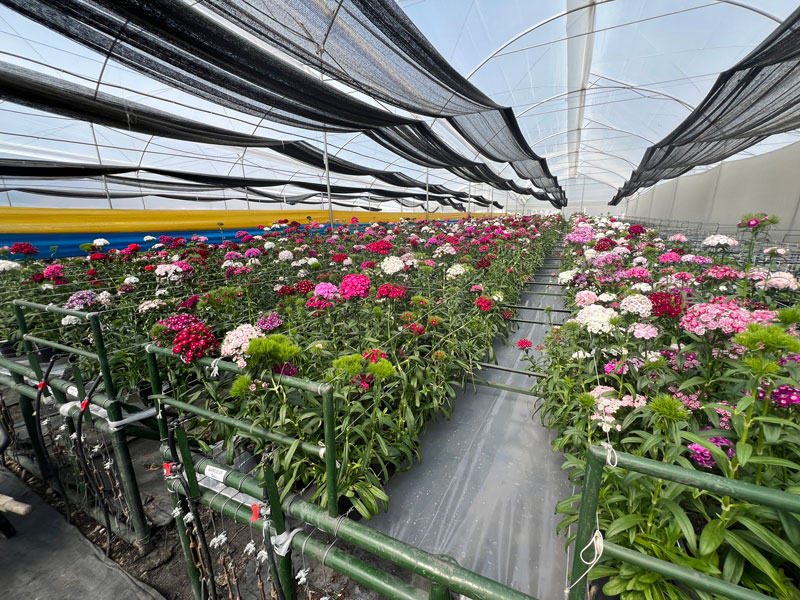4/1/2024
Putting the Special in Specialty Cuts
Jennifer Zurko
For those of you who don’t grow cut flowers, you may not realize that 80% of the specialty cut flowers imported into the U.S. come from Colombia and Ecuador. So while I was there in February, I had to stop by at least one operation.
Ball SB, located outside of Bogotá, is a subsidiary of Ball Horticultural Company that was opened in 1992. Ball SB breeds, produces and sells specialty cut plant material all around the world all year round direct from their grower partners in Colombia, Ecuador, Central America and Kenya. (When I say “specialty,” that means other types of plants other than roses.) Their specialty in specialty cuts breeding is gypsophila (baby’s breath), dianthus, alstroemeria and limonium, but they also trial and produce other crops from other breeders, like stock, delphinium, snapdragon, sunflowers, dahlias, gerberas, kale and others.
They have two farms in Colombia: the R&D facility where breeding and trialing happens; and the production farm where the mother stock is kept, rooted and unrooted cuttings and plugs are produced, and tissue culture is hardened. (They also have trialing stations in Ecuador and Kenya.)
Ball SB originally started as a seed distributor, importing flower seeds that were not grown in Colombia like asters and snapdragons, and over its 30 years in business, it’s expanded into a global company with multiple breeding programs and production of different forms.
One of the more interesting things I saw was that they don’t just focus on constantly improving their processes and output, but they’re also trialing other types of crops to see if they can be used as a cut flower. They’re conducting trials on crops like ageratum, kalanchoe and echinacea that will, hopefully, be seen in bouquets in a store near you.
Alvaro Gomez, Ball SB’s GM, said, “The crops are looking very promising, and as they are already commercial varieties working in other markets, we believe we can fast track some of them.”
Ball SB’s selection process is INTENSE. Silvia Perez, head of R&D, said that 99% of plants they trial don’t make it past the first round. And even if they make it through their in-ground trials, they conduct vase life trials and do what they call “travel simulations” to make sure they can make it through the shipping process. If they can’t last after being in a box for seven days, they’re a no-go.
What you see here is dianthus plants going through their first round of selection for “attractiveness”—flower shape, color brightness, color stability, etc. The length of selection depends on the crop: dianthus takes 14 to 15 weeks; gypsophila takes 20 to 25 weeks. Alstroemeria can take years.
During the pandemic, many cut flower producers saw an up-tick in demand, and there’s been an increase in small and medium-sized cut flower farms popping up in the U.S. growing domestically produced flowers to serve their local markets.
“There’s been an increase in flower consumption for other uses besides gifting, and cut flowers are more available in other channels like supermarkets that have allowed us to be successful,” said Alvaro.
And just like bedding plant producers in the U.S., there’s been some consolidation with the larger off-shore cut flower producers. But because these larger farms also breed and produce on a large scale to serve high-volume retailers like the grocery chains, there’s room enough for everyone to serve the consumers who like those non-rose-filled mixed bouquets. GT
